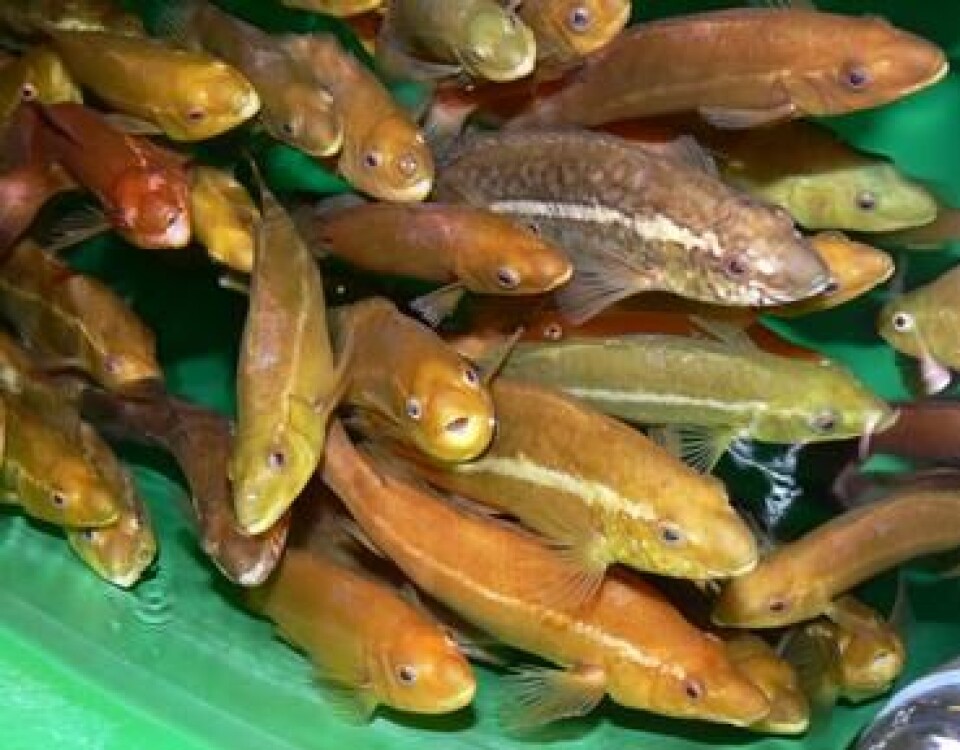
Cleanerfish idiosyncrasies revealed
Lumpfish tend to stay closer to the surface than salmon when it is sunny and warm, and often eat food other than sea lice, according to a new experiment undertaken by Norway’s Institute of Marine Research (IMR).
Of four tested cleanerfish species – lumpfish, corkwing, goldsinny and ballan wrasse -= the latter were the most interested in the salmon.
“Previous experiments have shown that lumpfish eat the sea lice, but in our experiments, lumpfish showed least interest in salmon,” Anne Berit Skiftesvik, who also had the primary responsibility for the study, said in a press release.
Lumpfish are the third largest aquaculture species in Norway, and production increases from year to year. In 2015, farmers sold 11.8 million breeding roes; more than three times as many as the year before, according to figures from the Directorate of Fisheries.
There is also a small wrasse breeding programme in Norway, but still far more than half the cleanerfish still come from the wild – with around 20 million wild-caught cleanerfish are used in Norwegian fish farms each year.
A taste for jellies
“There may be several reasons why lumpfish were the least eager lice-eaters in this study,” continues Skiftesvik. “Plenty of sunshine made the salmon swim deep in the cages, while the lumpfish remained in the upper part.”
“We also observed that lumpfish grazed a lot on other prey in the water, and were particularly fond of jellyfish,” she adds.
Of the four species, ballan wrasse were the most interested in salmon; regularly being seen seeking food along the body of the salmon.
Different needs
Salmon farmers often use several different species of cleanerfish in the same cage, but it is little known how the behaviour of the individual species, and the interactions between species, affect them and their consumption of sea lice. In nature the different species choose habitat based on their seabed preferences, which are governed by vegetation and exposure.
“It is possible that some of the differences we see between species in nature follow them into the salmon cages. Lumpfish and wrasse live normally together, and we do not know enough about how the different species of wrasse work in the same cage,” says Skiftesvik.
Non-aggressive
Behaviour was examined using cameras and antennae to location and record the fish. Skiftesvik says that there was surprisingly little aggression between the different wrasse species, which are normally quite keen to mark their territory.
“Only corkwing showed signs of aggressive behaviour, but it was among themselves. Thus, it appears to be fine to combine several species of cleanerfish,” she concludes.























































